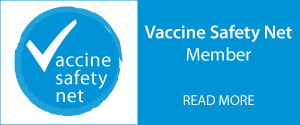This editorial by Dr. Robert T. Chen first appeared in the October 2023 issue of Safety by Numbers. It is reposted here with permission from GVDN.
Historically, much of the safety assessment of a new vaccine was deferred to post-introduction. Safety assessments within pre-approval clinical trials tended to be separate from post-approval Real-World Evidence (RWE). There were barriers to implementing a vaccine lifecycle approach, including a disconnect between separate teams and staff for pre- versus post-approval. Applicability in low- and middle-income countries (LMICs) and high-income countries (HICs) was also limited. In fact, LMICs were often missing large administrative datasets.
As discussed at the recent conference of the International Alliance for Biological Standardization (IABS), Real-World Evidence offers opportunities to break down these barriers to implementation in LMICs and improve regulatory and public health decision-making. The Safety Platform for Emergency vACcines (SPEAC) supports the harmonization of safety evaluation in clinical trials and in the generation of RWE.
SPEAC is a major initiative by CEPI and the Brighton Collaboration to develop tools for vaccine safety assessment in the pre-introduction phase that harmonizes with the post-introduction phase. To do so, we are establishing a RWE infrastructure for vaccine safety during early deployment.
Our work in the monitoring of clinical trials and the development of case definitions, companion guides, and codes that can be used in RWE will advance this vision. We are conducting landscape assessments for sites that can conduct pharmacovigilance in LMICs with the aim of linking with sites that may be trained and engaged for safety evaluations.
SPEAC’s work focuses on new vaccines being developed against CEPI’s priority pathogens, including Lassa fever, Chikungunya, Nipah virus, and MERS. However, SPEAC’s RWE framework for CEPI pathogens can be adapted for other pathogens. We look forward to future opportunities to expand this work to other pathogens.



